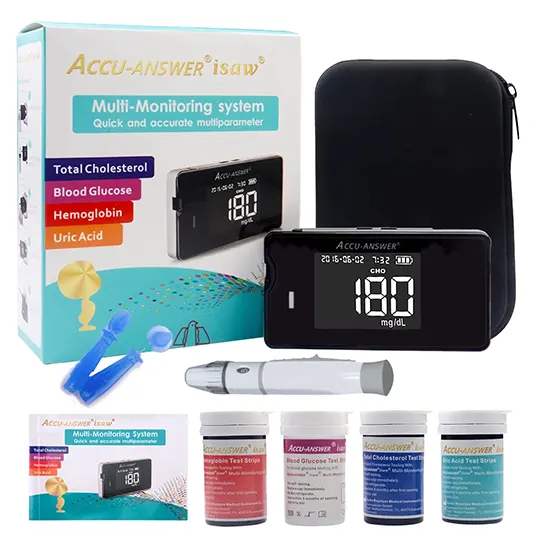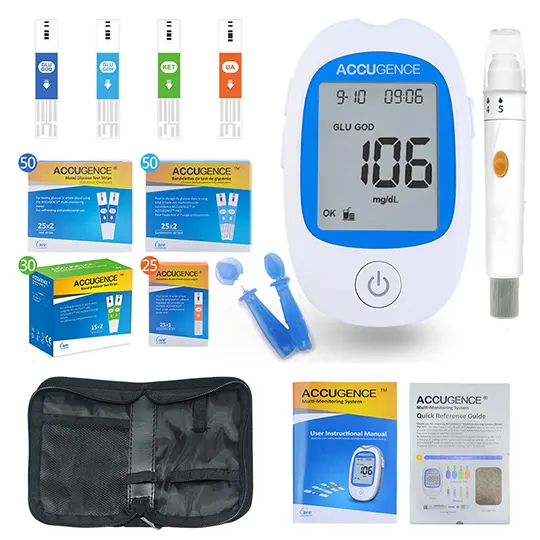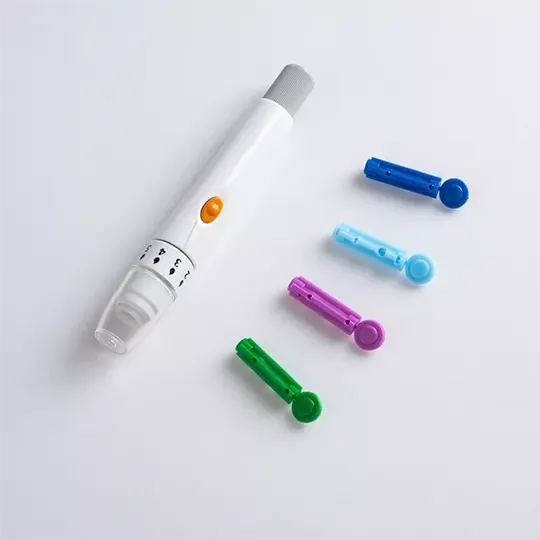Dopamine Drug Description
- Generic Name: dopamine hydrochloride
- Brand Name: Dopamine
- Drug Class: Inotropic Agents
side effects drug center dopamine (dopamine hydrochloride) drug
Drug Description
What is Dopamine and how is it used?
Dopamine is a prescription medicine used to treat the symptoms of low blood pressure, low cardiac output and improves blood flow to the kidneys. Dopamine may be used alone or with other medications.
Dopamine belongs to a class of drugs called Inotropic Agents.
What are the possible side effects of Dopamine?
Dopamine may cause serious side effects including:
- lightheadedness,
- chest pain,
- fast, slow or pounding heartbeats,
- shortness of breath,
- cold feeling,
- numbness,
- blue-colored appearance in your hands or feet, and
- darkening or skin changes in your hands or feet
Get medical help right away, if you have any of the symptoms listed above.
The most common side effects of Dopamine include:
- headache,
- anxiety,
- nausea,
- vomiting,
- chills and
- goose bumps
Tell the doctor if you have any side effect that bothers you or that does not go away.
These are not all the possible side effects of Dopamine. For more information, ask your doctor or pharmacist.
Call your doctor for medical advice about side effects. You may report side effects to FDA at 1-800-FDA-1088.
DESCRIPTION
Dopamine, a sympathomimetic amine vasopressor, is the naturally occurring immediate precursor of norepinephrine. Dopamine hydrochloride is a white to off-white crystalline powder, which may have a slight odor of hydrochloric acid. It is freely soluble in water and soluble in alcohol. Dopamine HCl is sensitive to alkalies, iron salts, and oxidizing agents. Chemically it is designated as 4-(2-aminoethyl) pyrocatechol hydrochloride, and the structural formula is:
 |
Dopamine Hydrochloride Injection is a clear, practically colorless, sterile, pyrogen-free, aqueous solution of dopamine HCl for intravenous infusion after dilution. Each mL contains either 40 mg, 80 mg, or 160 mg of dopamine hydrochloride (equivalent to 32.3 mg, 64.6 mg and 129.2 mg of dopamine base respectively) in water for injection, q.s. Each mL of all preparations contains the following: sodium metabisulfite 9 mg added as an antioxidant; citric acid, anhydrous 10 mg and sodium citrate, dihydrate 5 mg added as a buffer. The pH range (2.5 to 5.0) may be adjusted with additional citric acid and/or sodium citrate.
Dopamine must be diluted in an appropriate sterile parenteral solution (see DOSAGE AND ADMINISTRATION section).
Indications
Dopamine HCl is indicated for the correction of hemodynamic imbalances present in the shock syndrome due to myocardial infarction, trauma, endotoxic septicemia, open-heart surgery, renal failure, and chronic cardiac decompensation as in congestive failure.
Patients most likely to respond adequately to dodpamine HCl are those in whom physiological parameters, such as urine flow, myocardial function, and blood pressure, have not undergone profound deterioration. Multiclinic trials indicate that the shorter the time interval between onset of signs and symptoms and initiation of therapy with volume correction and dopamine HCl, the better the prognosis. Where appropriate, blood volume restoration with a suitable plasma expander or whole blood should be accomplished or completed prior to administration of dopamine HCl.
Poor Perfusion Of Vital Organs
Urine flow appears to be one of the better diagnostic signs by which adequacy of vital organ perfusion can be monitored. Nevertheless, the physician should also observe the patient for signs of reversal of confusion or reversal of comatose condition. Loss of pallor, increase in toe temperature, and/or adequacy of nail bed capillary filling may also be used as indices of adequate dosage. Clinical studies have shown that when dopamine HCl is administered before urine flow has diminished to levels approximating 0.3 mL/minute, prognosis is more favorable. Nevertheless, in a number of oliguric or anuric patients, administration of dopamine HCl has resulted in an increase in urine flow which in some cases reached normal levels. Dopamine HCl may also increase urine flow in patients whose output is within normal limits and thus may be of value in reducing the degree of pre-existing fluid accumulation. It should be noted that at doses above those optimal for the individual patient, urine flow may decrease, necessitating reduction of dosage.
Low Cardiac Output
Increased cardiac output is related to dopamine's direct inotropic effect on the myocardium. Increased cardiac output at low or moderate doses appears to be related to a favorable prognosis. Increase in cardiac output has been associated with either static or decreased systemic vascular resistance (SVR). Static or decreased SVR associated with low or moderate movements in cardiac output is believed to be a reflection of differential effects on specific vascular beds with increased resistance in peripheral beds (e.g., femoral) and concomitant decreases in mesenteric and renal vascular beds.
Redistribution of blood flow parallels these changes so that an increase in cardiac output is accompanied by an increase in mesenteric and renal blood flow. In many instances the renal fraction of the total cardiac output has been found to increase. Increase in cardiac output produced by dopamine is not associated with substantial decreases in systemic vascular resistance as may occur with isoproterenol.
Hypotension
Hypotension due to inadequate cardiac output can be managed by administration of low to moderate doses of dopamine HCl, which have little effect on SVR. At high therapeutic doses, the alphaadrenergic activity of dopamine becomes more prominent and thus may correct hypotension due to diminished SVR. As in the case of other circulatory decompensation states, prognosis is better in patients whose blood pressure and urine flow have not undergone profound deterioration. Therefore, it is suggested that the physician administer dopamine HCl as soon as a definite trend toward decreased systolic and diastolic pressure becomes evident.
Dosage
DOSAGE AND ADMINISTRATION
WARNING: This is a potent drug: It must be diluted before administration to the patient.
Dopamine Hydrochloride Injection, USP is administered (only after dilution) by intravenous infusion.
Suggested Dilution: Transfer contents of one or more ampuls or vials by aseptic technique to either 250 mL or 500 mL of one of the following sterile intravenous solutions:
- Sodium Chloride Injection, USP
- Dextrose (5%) Injection, USP
- Dextrose (5%) and Sodium Chloride (0.9%) Injection, USP
- 5% Dextrose in 0.45% Sodium Chloride Solution Injection, USP
- Dextrose (5%) and Lactated Ringer'™s Solution Injection
- Sodium Lactate Injection, USP (1/6 Molar)
- Lactated Ringer'™s Injection, USP
Dopamine Hydrochloride Injection, USP has been found to be stable for a minimum of 24 hours after dilution in the sterile intravenous solutions listed above. However, as with all intravenous admixtures, dilution should be made just prior to administration.
Do NOT add Dopamine Hydrochloride to Sodium Bicarbonate Injection, USP or other alkaline intravenous solutions, since the drug is inactivated in alkaline solution.
Rate of Administration: Dopamine Hydrochloride Injection, USP, after dilution, is administered intravenously by infusion through a suitable intravenous catheter or needle. When administering Dopamine Hydrochloride (or any potent medication) by continuous intravenous infusion, it is advisable to use a precision volume control intravenous set. Each patient must be individually titrated to the desired hemodynamic or renal response to dopamine.
Administration rates greater than 50 mcg/kg/minute have safely been used in advanced circulatory decompensation states. If unnecessary fluid expansion is of concern, adjustment of drug concentration may be preferred over increasing the flow rate of a less concentrated dilution.
Suggested Regimen
- When appropriate, increase blood volume with whole blood or plasma until central venous pressure is 10 to 15 cm H2O or pulmonary wedge pressure is 14 to 18 mm Hg.
- Begin infusion of diluted solution at doses of 2 to 5
mcg/kg/minute of Dopamine Hydrochloride in patients who are likely to respond
to modest increments of heart force and renal perfusion.
In more seriously ill patients, begin infusion of diluted solution at doses of 5 mcg/kg/minute of Dopamine Hydrochloride and increase gradually using 5 to 10 mcg/kg/minute increments up to 20 to 50 mcg/kg/minute as needed. If doses in excess of 50 mcg/kg/minute are required, it is advisable to check urine output frequently. Should urinary flow begin to decrease in the absence of hypotension, reduction of dopamine dosage should be considered. Multiclinic trials have shown that more than 50% of the patients have been satisfactorily maintained on doses of dopamine less than 20 mcg/kg/minute. In patients who do not respond to these doses with adequate arterial pressures or urine flow, additional increments of dopamine may be given in an effort to produce an appropriate arterial pressure and central perfusion. - Treatment of all patients requires constant evaluation of therapy in terms of the blood volume, augmentation of cardiac contractility, and distribution of peripheral perfusion. Dosage of dopamine should be adjusted according to the patient's response, with particular attention to diminution of established urine flow rate, increasing tachycardia or development of new dysrhythmias as indices for decreasing or temporarily suspending the dosage.
- As with all potent intravenously administered drugs, care should be taken to control the rate of administration to avoid inadvertent administration of a bolus of drug.
Parenteral drug products should be inspected visually for particulate matter and discoloration prior to administration, whenever solution and container permit.
HOW SUPPLIED
Dopamine HCl Injection, USP is available as follows:
| Product No. | Dopamine HCl mg per | volume fill How Packaged |
| NDC 0517-1805-25 | 200 mg/5 mL Vial (40 mg/mL) | Packages of 25 vials (color-coded WHITE) |
| NDC 0517-1905-25 | 400 mg/5 mL Vial (80 mg/mL) | Packages of 25 vials (color-coded GREEN) |
| NDC 0517-1305-25 | 800 mg/5 mL Vial (160 mg/mL) | Packages of 25 vials (color-coded YELLOW) |
Avoid contact with alkalies (including sodium bicarbonate), oxidizing agents or iron salts.
Store at 20° to 25°C (68° to 77°F); excursions permitted to 15° to 30°C (59° to 86°F) (See USP Controlled Room Temperature).
NOTE - Do not use the injection if it is darker than slightly yellow or discolored in any other way.
WARNING: NOT FOR DIRECT INTRAVENOUS INJECTION, MUST BE DILUTED BEFORE USE.
INTRAVENOUS INFUSION ONLY.
The vial stopper is not made with natural rubber latex.
American Regent, Inc., Shirley, NY 11967. Revised: Dec 2014
Side Effects
The following adverse reactions have been observed, but there are not enough data to support an estimate of their frequency.
Cardiovascular System
ventricular arrhythmia (at very high doses), atrial fibrillation, ectopic beats, tachycardia, anginal pain, palpitation, cardiac conduction abnormalities, widened QRS complex, bradycardia, hypotension, hypertension, vasoconstriction
Respiratory System
Gastrointestinal System
nausea, vomiting
Metabolic/Nutritional System
Central Nervous System
headache, anxiety
Dermatological System
Other
Gangrene of the extremities has occurred when high doses were administered for prolonged periods or in patients with occlusive vascular disease receiving low doses of dopamine HCl.
Drug Interactions
- Because dopamine is metabolized by monoamine oxidase (MAO), inhibition of this enzyme prolongs and potentiates the effect of dopamine. Patients who have been treated with MAO inhibitors within two to three weeks prior to the administration of dopamine HCl should receive initial doses of dopamine HCl no greater than one-tenth (1/10) of the usual dose.
- Concurrent administration of dopamine HCl and diuretic agents may produce an additive or potentiating effect on urine flow.
- Tricyclic antidepressants may potentiate the pressor response to adrenergic agents.
- Cardiac effects of dopamine are antagonized by beta-adrenergic blocking agents, such as propranolol and metroprolol. The peripheral vasoconstriction caused by high doses of dopamine HCl is antagonized by alpha-adrenergic blocking agents. Dopamine-induced renal and mesenteric vasodilation is not antagonized by either alpha- or beta-adrenergic blocking agents.
- Haloperidol appears to have strong central antidopaminergic properties. Haloperidol and haloperidol-like drugs suppress the dopaminergic renal and mesenteric vasodilation induced at low rates of dopamine infusion.
- Cyclopropane or halogenated hydrocarbon anesthetics increase cardiac autonomic irritability and may sensitize the myocardium to the action of certain intravenously administered catecholamines, such as dopamine. The interaction appears to be related both to pressor activity and to the beta-adrenergic stimulating properties of these catecholamines, and may produce ventricular arrhythmias. Therefore, EXTREME CAUTION should be exercised when administering dopamine HCl to patients receiving cyclopropane or halogenated hydrocarbon anesthetics. It has been reported that results of studies in animals indicated that dopamine-induced ventricular arrhythmias during anesthesia can be reversed by propranolol.
- The concomitant use of vasopressors, vasoconstricting agents and some oxytocic drugs may result in severe persistent hypertension. See Labor and Delivery below.
- Administration of phenytoin to patients receiving dopamine HCl has been reported to lead to hypotension and bradycardia. It is suggested that in patients receiving dopamine HCl, alternatives to phenytoin should be used if anticonvulsant therapy is needed.
Warnings
Contains sodium metabisulfite, a sulfite that may cause allergic-type reactions including anaphylactic symptoms and life-threatening or less severe asthmatic episodes in certain susceptible people. The overall prevalence of sulfite sensitivity in the general population is unknown, and probably low. Sulfite sensitivity is seen more frequently in asthmatic than in nonasthmatic people.
Do NOT add dopamine HCl to any alkaline diluent solution since the drug is inactivated in alkaline solution.
Patients who have been receiving MAO inhibitors prior to the administration of dopamine HCl will require substantially reduced dosage. See DRUG INTERACTIONS section.
Precautions
General
- Monitoring: Careful monitoring of blood pressure, urine flow, and, when possible, cardiac output and pulmonary wedge pressure is necessary during dopamine HCl infusion, as with any adrenergic agent.
- Hypovolemia: Prior to treatment with dopamine HCl, hypovolemia should be fully corrected, if possible, with whole blood or plasma as indicated. Monitoring central venous pressure or left ventricular filling pressure may help detect and treat hypovolemia.
- Hypoxia, Hypercapnia, Acidosis: These conditions, which may reduce the effectiveness or increase the adverse effects of dopamine, must be identified and corrected prior to or concurrently with dopamine HCl administration.
- Decreased Pulse Pressure: If a disproportionate increase in diastolic pressure and a marked decrease in pulse pressure are observed in patients receiving dopamine HCl, reduce the infusion rate and closely monitor the patient for further evidence of predominant vasoconstrictor activity, unless such an effect is desired.
- Ventricular Arrhythmias: If an increased number of ectopic beats is observed, reduce the dose if possible.
- Hypotension: At lower infusion rates, if hypotension occurs, rapidly increase the infusion rate until adequate blood pressure is achieved. If hypotension persists, discontinue dopamine HCl and administer a more potent vasoconstrictor, such as norepinephrine.
- Extravasation: Infuse dopamine HCl into a large vein, preferably in the antecubital fossa, whenever possible to prevent extravasation into tissue adjacent to the infusion site, which may cause necrosis and sloughing of surrounding tissue. Less suitable infusion sites, such as veins in the dorsum of the hand or ankle, should be used only if immediate attention is required. Switch to a more suitable site as soon as possible. Continuously monitor the infusion site for free flow.
- Occlusive Vascular Disease: Patients with a history of occlusive vascular disease (e.g., atherosclerosis, arterial embolism, Raynaud’s disease, cold injury, diabetic endarteritis, or Buerger’s disease) should be closely monitored for changes in skin color or temperature in the extremities. If such changes occur and are thought to result from compromised circulation, weigh the benefits of continued dopamine HCl infusion against the risk of possible necrosis. This condition may be reversed by reducing or discontinuing the infusion.
Antidote for Peripheral Ischemia: To prevent sloughing and necrosis in ischemic areas, infiltrate the area as soon as possible with 10–15 mL of saline solution containing 5–10 mg of phentolamine mesylate, an adrenergic blocking agent. Use a syringe with a fine hypodermic needle and liberally infiltrate the ischemic area. Sympathetic blockade with phentolamine causes immediate and noticeable local hyperemic changes if infiltrated within 12 hours. Administer phentolamine as soon as extravasation is noted. - Weaning: When discontinuing the infusion, gradually reduce the dose of dopamine HCl while expanding blood volume with intravenous fluids to prevent marked hypotension from sudden cessation.
Carcinogenesis, Mutagenesis, Impairment of Fertility
No long-term animal studies have been performed to evaluate the carcinogenic potential of dopamine hydrochloride.
In the Ames test, dopamine hydrochloride at doses approaching maximal solubility showed no clear genotoxic potential. Although there was a reproducible dose-dependent increase in revertant colonies with strains TA100 and TA98, both with and without metabolic activation, the small increase was considered inconclusive for mutagenicity. In the L5178Y TK+/- mouse lymphoma assay, dopamine hydrochloride was toxic at the highest concentrations (750 mcg/mL without metabolic activation and 3,000 mcg/mL with activation) and associated with increased mutant frequencies compared to controls; no increases were noted at lower concentrations.
No clear evidence of clastogenic potential was observed in the in vivo mouse or male rat bone marrow micronucleus test with intravenous dopamine hydrochloride doses up to 224 mg/kg and 30 mg/kg, respectively.
Pregnancy
Teratogenic Effects
Teratogenicity studies in rats and rabbits at dopamine HCl doses up to 6 mg/kg/day intravenously during organogenesis showed no detectable teratogenic or embryotoxic effects, although maternal toxicity (e.g., mortalities, decreased body weight gain, and pharmacotoxic signs) was observed in rats. In a published study, dopamine HCl administered at 10 mg/kg subcutaneously for 30 days in female rats markedly prolonged metestrus and increased mean pituitary and ovary weights. In pregnant rats, administration throughout gestation or for 5 days starting on gestation day 10 or 15 resulted in decreased body weight gain, increased mortalities, and slight increases in cataract formation among offspring. No adequate and well-controlled studies in pregnant women exist, and it is unknown whether dopamine HCl crosses the placental barrier. Use dopamine HCl during pregnancy only if the potential benefit justifies the potential risk to the fetus.
Labor and Delivery
In obstetrics, if vasopressor drugs are used to correct hypotension or are added to a local anesthetic solution, some oxytocic drugs may cause severe, persistent hypertension and may lead to rupture of a cerebral blood vessel during the postpartum period.
Nursing Mothers
It is unknown whether dopamine HCl is excreted in human milk. As many drugs are excreted in human milk, exercise caution when administering dopamine HCl to a nursing mother.
Pediatric Use
The safety and effectiveness of dopamine HCl in children have not been established. Although used in a limited number of pediatric patients, such use has not sufficiently defined proper dosage or limitations.
Geriatric Use
Clinical studies of dopamine injection did not include sufficient numbers of subjects aged 65 and older to determine whether they respond differently from younger subjects. Other clinical experience has not identified differences in responses between elderly and younger patients. In general, dose selection for elderly patients should be cautious, starting at the lower end of the dosing range, due to the greater frequency of decreased hepatic, renal, or cardiac function and concomitant disease or other drug therapy.
Overdosage
In case of accidental overdosage, indicated by excessive blood pressure elevation, reduce the administration rate or temporarily discontinue dopamine HCl until the patient’s condition stabilizes. Given dopamine’s short duration of action, additional remedial measures are usually unnecessary. If these measures fail, consider using a short-acting alpha-adrenergic blocking agent, such as phentolamine.
Contraindications
- Dopamine HCl is contraindicated in patients with pheochromocytoma.
- Dopamine HCl should not be administered to patients with uncorrected tachyarrhythmias or ventricular fibrillation.
Clinical Pharmacology
Dopamine is a natural catecholamine formed by the decarboxylation of 3,4-dihydroxyphenylalanine (DOPA). It is a precursor to norepinephrine in noradrenergic nerves and a neurotransmitter in certain areas of the central nervous system, particularly the nigrostriatal tract, and in some peripheral sympathetic nerves.
Dopamine exerts positive chronotropic and inotropic effects on the myocardium, increasing heart rate and cardiac contractility. These effects are achieved directly via agonist action on beta-adrenoceptors and indirectly by releasing norepinephrine from storage sites in sympathetic nerve endings.
Dopamine’s onset of action occurs within 5 minutes of intravenous administration, with a plasma half-life of approximately 2 minutes and a duration of action less than 10 minutes. However, in the presence of monoamine oxidase (MAO) inhibitors, the duration may extend to 1 hour. The drug is widely distributed in the body but does not significantly cross the blood-brain barrier. Dopamine is metabolized in the liver, kidney, and plasma by MAO and catechol-O-methyltransferase into inactive compounds, homovanillic acid (HVA) and 3,4-dihydroxyphenylacetic acid. Approximately 25% of the dose is taken up into adrenergic nerve terminals, where it is hydroxylated to form norepinephrine. About 80% of the drug is excreted in the urine within 24 hours, primarily as HVA, its sulfate and glucuronide conjugates, and 3,4-dihydroxyphenylacetic acid. A small portion is excreted unchanged.
The effects of dopamine are dose-dependent and vary based on the patient’s clinical status:
- Low infusion rates (0.5–2 mcg/kg/min): Dopamine causes vasodilation through specific agonist action on dopamine receptors (distinct from alpha and beta adrenoceptors) in renal, mesenteric, coronary, and intracerebral vascular beds, increasing glomerular filtration rate, renal blood flow, sodium excretion, and urine flow. Hypotension may occur. Increased urinary output is typically not associated with decreased urine osmolarity. Haloperidol is an antagonist at these dopamine receptors.
- Intermediate infusion rates (2–10 mcg/kg/min): Dopamine stimulates beta1-adrenoceptors, improving myocardial contractility, increasing sinoatrial (SA) rate, and enhancing impulse conduction in the heart, with minimal stimulation of beta2-adrenoceptors (peripheral vasodilation). It causes less myocardial oxygen consumption than isoproterenol and is not typically associated with tachyarrhythmia. It usually increases systolic and pulse pressure with no effect or a slight increase in diastolic pressure. Blood flow to peripheral vascular beds may decrease, while mesenteric flow increases due to increased cardiac output. Total peripheral resistance (alpha effects) remains largely unchanged.
- High infusion rates (10–20 mcg/kg/min): Dopamine stimulates alpha-adrenoceptors, causing vasoconstrictor effects and a rise in blood pressure, initially in the skeletal muscle vascular beds, and with increasing doses, in renal and mesenteric vessels.
- Very high infusion rates (above 20 mcg/kg/min): Alpha-adrenoceptor stimulation predominates, and vasoconstriction may compromise limb circulation, reversing renal dilation and natriuresis.
Patient Information
No patient information provided. Refer to the Warnings and Precautions sections for details.




